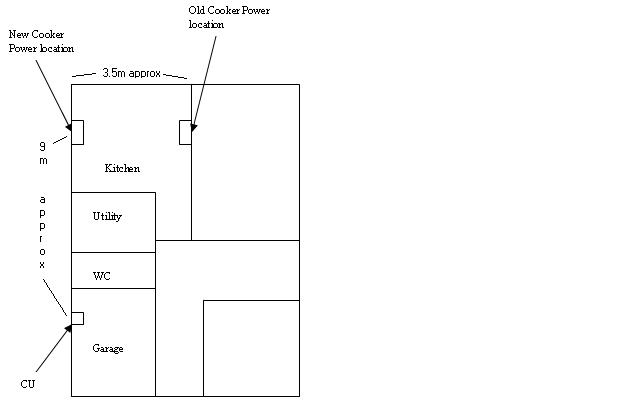Hi all,
I'm doing the kitchen and changing the oven from an all in one elec oven/gas hob to a built-under elec oven and separate 4 ring induction hob. Oven is rated at Nominal power: 3kW 13A and hob is 5.9kW 32A
Oven http://www.smeguk.com/Catalogue/Product/SC485N-8.aspx
Hob http://www.fagor.co.uk/60cm-zone-induction-hob-with-touch-controls-p-46.html
The current circuit to the cooker is via a DP switch (guessing 45A) that is on a 32A MCB at the CU. Would it be okay to run both cooker and hob on this circuit? What needs to be changed/checked. I'm thinking change the MCB for a 45A MCB and wire in the hob the the DP switch, with a separate 13A FCU for the cooker also wired to the DP switch?
I also think I'd have to check the cable used to wire in the current circuit. It should be 6mm I think.
Thanks
I'm doing the kitchen and changing the oven from an all in one elec oven/gas hob to a built-under elec oven and separate 4 ring induction hob. Oven is rated at Nominal power: 3kW 13A and hob is 5.9kW 32A
Oven http://www.smeguk.com/Catalogue/Product/SC485N-8.aspx
Hob http://www.fagor.co.uk/60cm-zone-induction-hob-with-touch-controls-p-46.html
The current circuit to the cooker is via a DP switch (guessing 45A) that is on a 32A MCB at the CU. Would it be okay to run both cooker and hob on this circuit? What needs to be changed/checked. I'm thinking change the MCB for a 45A MCB and wire in the hob the the DP switch, with a separate 13A FCU for the cooker also wired to the DP switch?
I also think I'd have to check the cable used to wire in the current circuit. It should be 6mm I think.
Thanks



